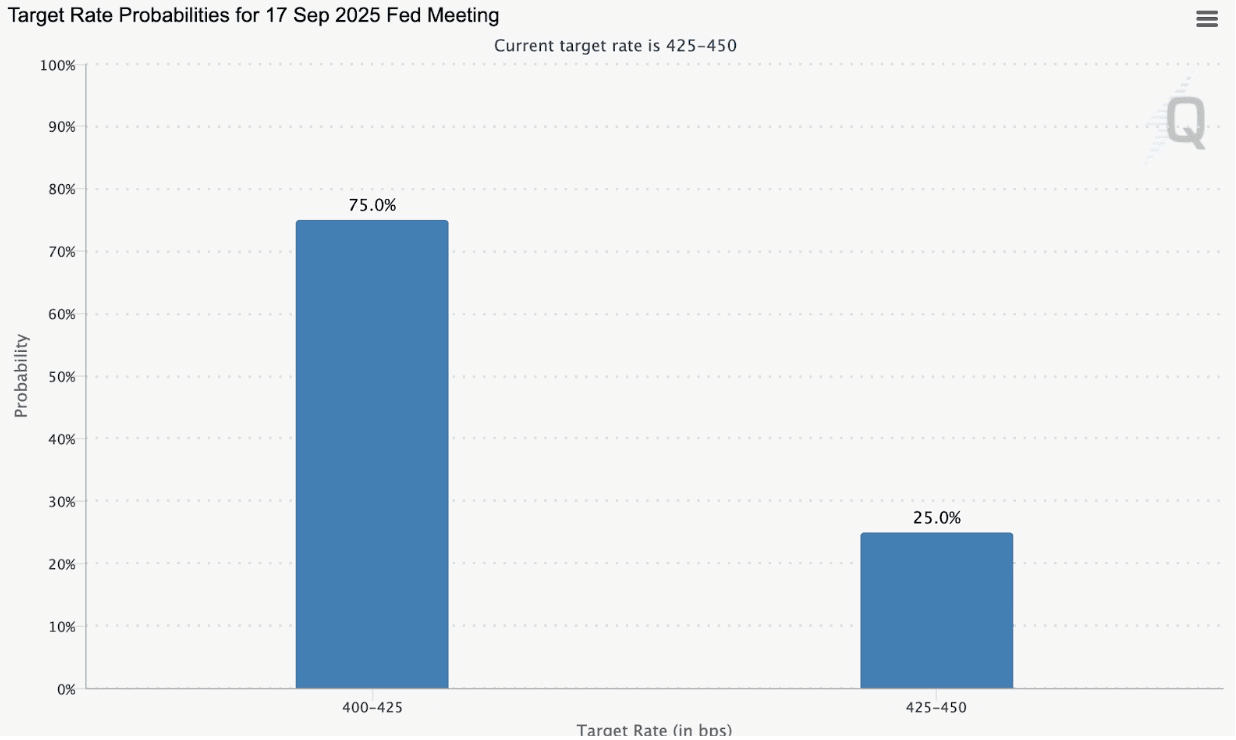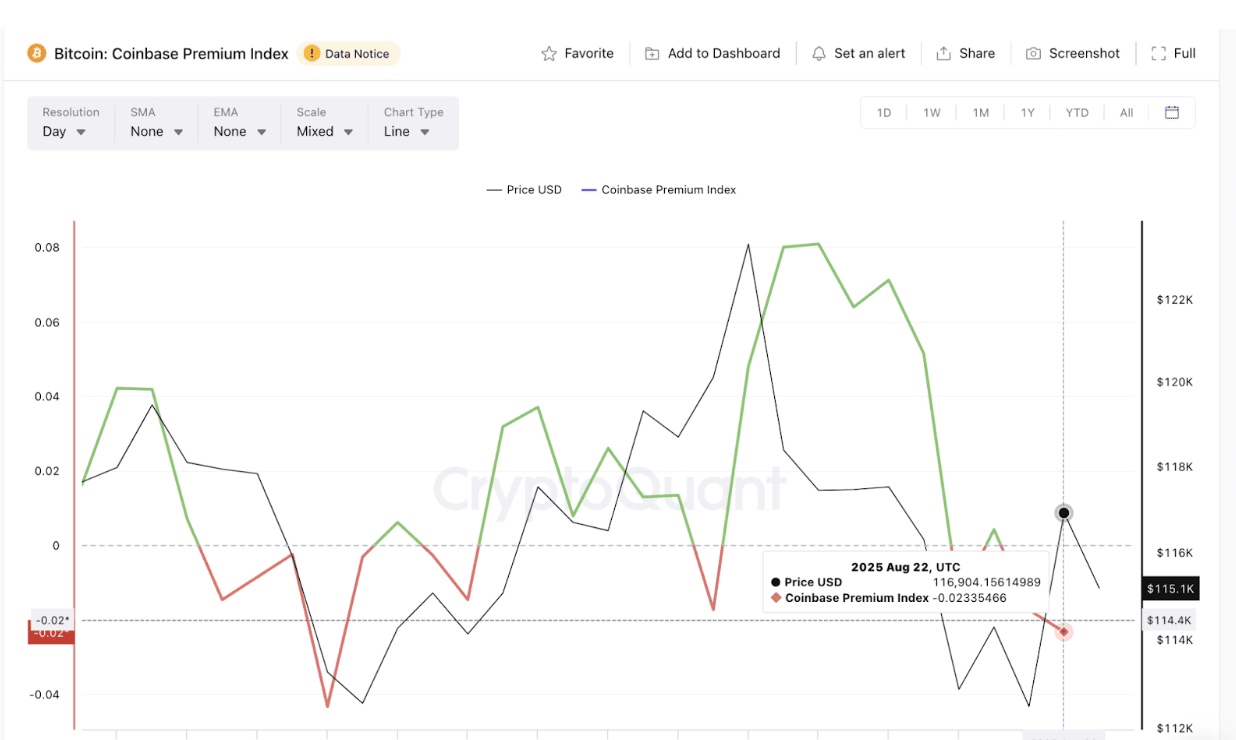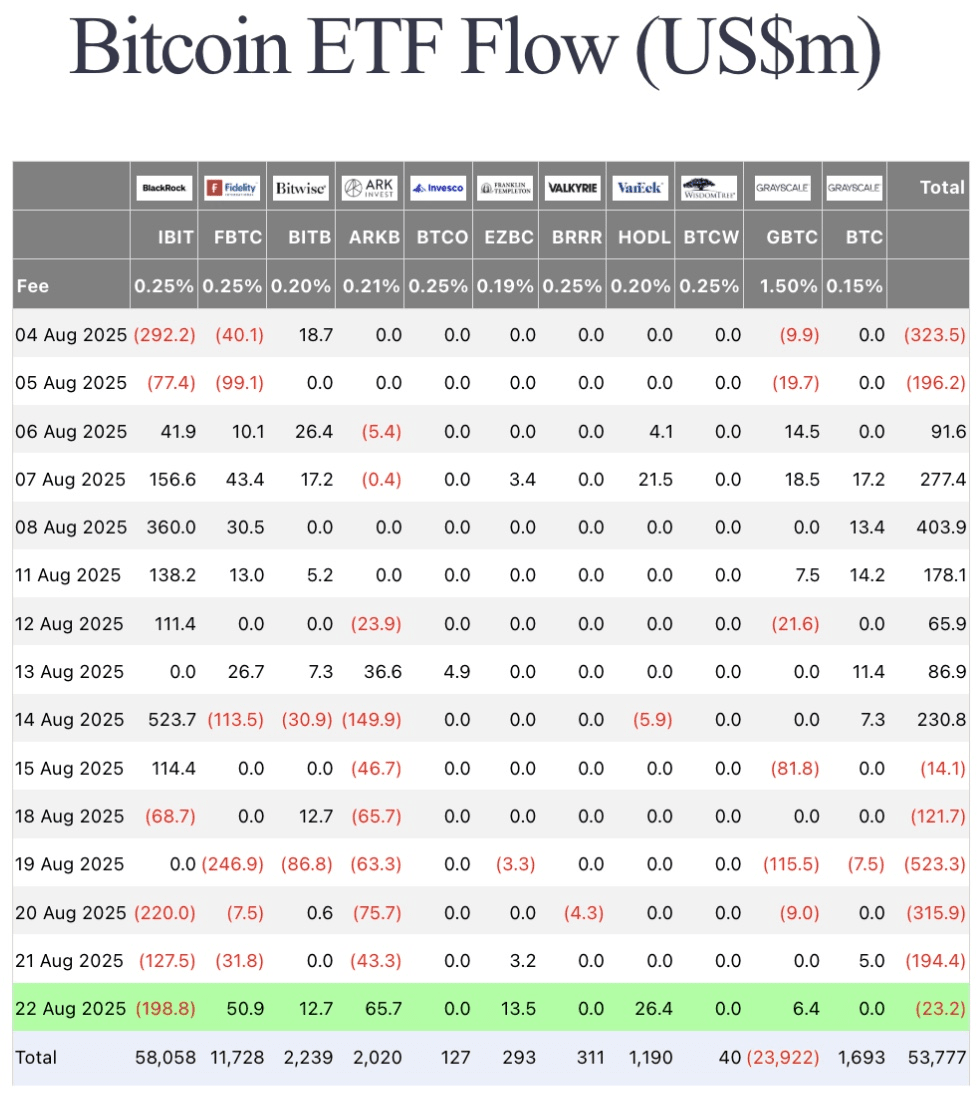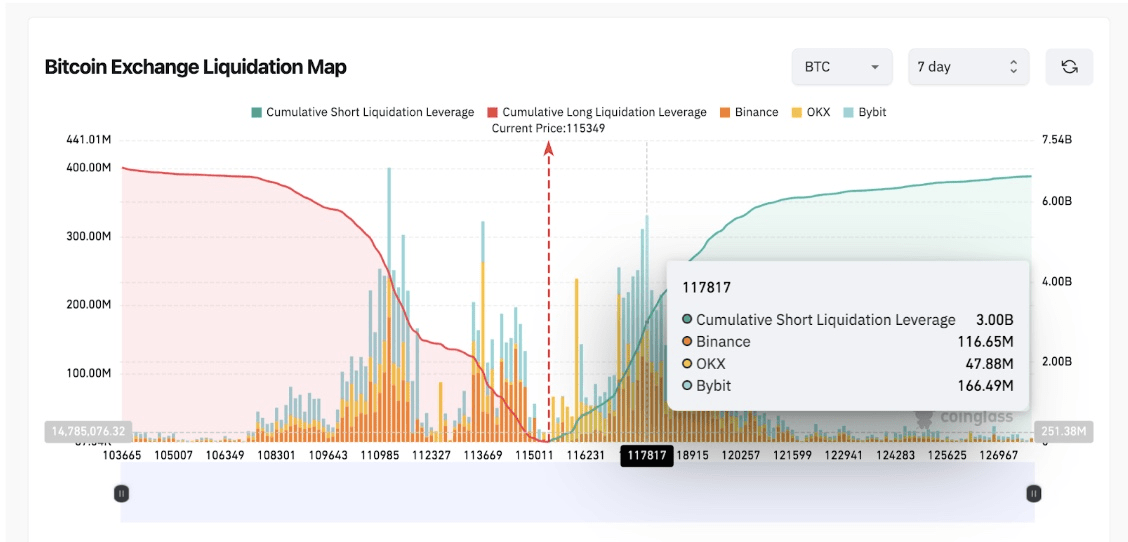The price $BTC did not reach the target level of $120,000, while Ethereum approached an all-time high of around $4,900. Market data revealed three main reasons for BTC's disappointing performance.
In brief:
Bitcoin stopped below $120,000, while Ethereum soared to new all-time highs.
Weak demand from whales and ETF outflows limited BTC's growth potential.
Derivatives market data shows a $3 billion short position cluster at $117,800.
On Saturday, August 23, the price of Bitcoin froze at $117,000, with intraday growth limited to just 3%. At the same time, Ethereum ( $ETH ) jumped by more than 10%, reaching a new all-time high of $4,900. This movement followed the 'dovish' statements by Federal Reserve Chairman Jerome Powell at the Jackson Hole symposium, which foreshadowed a decrease in interest rates.

Powell noted that the risks of falling employment have increased, opening the possibility of a rate cut in September. In response, the Federal Reserve (CME Group) Watch Tool shows that analysts are now pricing in a 75% rate cut at the next FOMC meeting, scheduled for September 17, 2025.
Altcoins reacted strongly to ETH, with Ripple (XRP), Solana (SOL), and Cardano (ADA) showing double-digit gains over the past 24 hours, settling above key resistance levels at $4750, $3, $200, and $0.90, respectively, at the time of publication.
However, Bitcoin failed to keep pace, quickly retreating to $115,600 after rebounding from its intraday high of $117,370. Market indicators highlight three main reasons for BTC's unsatisfactory performance compared to its competitors.
1. Bitcoin enjoys weak demand among Coinbase whale traders
One of the main factors was weak institutional demand. The CryptoQuant Coinbase Premium Index, which measures the difference between Bitcoin prices on Coinbase Pro, where US corporate investors dominate, and on Binance, where retail sellers dominate, fell to 0.002%, the lowest since August 1.

When this indicator is negative or close to zero, it signals that corporate investors are not showing much interest in the market, and market activity is set by retail traders. The 21-day low recorded on Friday suggests that, despite active participation from retail buyers, US 'whales' remain hesitant.
This cautious stance by institutions has seriously affected Bitcoin's ability to grow above its Tier 1 competitors.
2. Bitcoin ETFs did not record a single day of inflows this week
This week's ETF flows further highlighted investor preferences, pushing Bitcoin into the background. According to Farside Investors, Bitcoin funds saw outflows of $23 million on Friday.
This meant that Bitcoin ETFs failed to register a single day of net inflows this week, losing $1.2 billion as withdrawals exceeded deposits for six consecutive trading days, starting on August 15.

In contrast, Ethereum ETFs attracted $337 million in net inflows on Friday after $287 million on Thursday.
This divergence vividly demonstrates how, following Powell's statements, investor capital shifted towards Ethereum and other altcoins, leaving Bitcoin aside from the rally. Without the influx of funds from ETFs supporting the upward trend, BTC's upward trajectory was inevitably limited.
3. BTC bulls face $3 billion resistance at $117,800
Derivatives market data sheds light on the slow dynamics of the Bitcoin price, which fell below the $120,000 mark on Friday. Coinglass Liquidation Maps shows the distribution of credit positions at key price levels. At first glance, the sentiment is optimistic: the total leverage of long positions is $6.86 billion, which is slightly higher than the leverage of short positions at $6.64 billion.

However, a deeper analysis reveals over $3 billion in short positions concentrated at the $117,800 level, representing nearly 50% of all active bearish bets. This concentrated leverage stimulates strategic sell-offs as traders attempt to prevent a break through this key price level. Bitcoin's pullback from its intraday high of $117,377 is closely tied to this resistance wall.
Bitcoin Price Prediction
Given the resistance cluster at $117,800, Bitcoin is unlikely to confidently break through the $120,000 mark without an influx of new funds. If bullish liquidity does not outweigh short-term incentives, in the short term the price may consolidate between the support level of $113,500 and the resistance level of $118,000.
A decisive close above $118,000 could trigger a short squeeze, creating conditions for growth to $123,000. Conversely, failure to hold $113,500 could pave the way for a pullback to $110,000.
#bitcoin #Ethereum #Binance #news #altcoins
